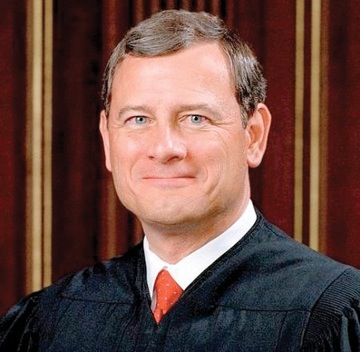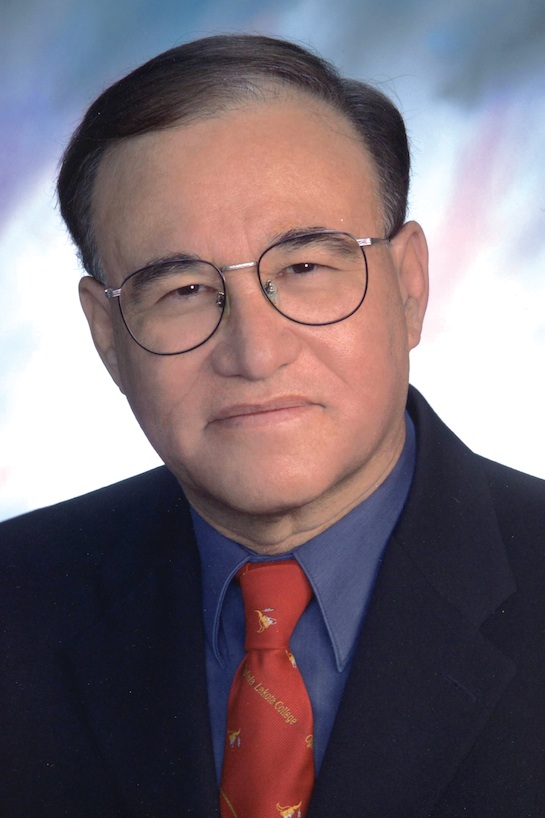
Supreme Court Chief Justice G. Roberts Jr. wrote the majority opinion in Shelby County v. Holder.

Tom Shortbull
Shortbull slams Supreme Court decision on Voting Rights
Decision sets Indian voting rights back 100 years
By Christina Rose
Native Sun News Associate Editor PINE RIDGE — A U.S. Supreme Court decision that removed Section 4 from the Voting Rights Act completely ignored the voting rights of American Indians according to several dissenters. Section 4 included a formula for deciding which states would be subject to pre-clearance before any changes could be made to voting. Such changes were often used to cause discrimination in voting practices. In 1980, South Dakota was included in the group of 17 states required to submit any voting changes for pre-clearance through the US Department of Justice. With last week’s ruling, Indian country now faces challenging times ahead. Although the Supreme Court justices stated that discrimination in voting was a thing of the distant past, South Dakota is currently engaged in at least two lawsuits that are based in voting discrimination. Thomas Short Bull, a leader in South Dakota’s movement for fair voting since the 1970s, said the changes made by the Supreme Court have turned the clock back more than 100 years. “This is what the Civil War was fought for,” Short Bull said. “This is about state’s rights, and basically, through Justice Roberts’ clear bias, this is moving us back to where minorities fought tooth and nail to vote in this country.” According to Short Bull, Justice John Roberts, who read the court’s decision, should have recused himself as a biased party. Short Bull said, “John Roberts was arguing to dismantle the Voting Rights Act maybe 20-30 years ago, while he was at the Department of Justice; and he is the one who wrote this opinion.” Short Bull was among South Dakota leaders in the Task Force on Indian-State Government Relations, and has been called several times as an expert witness in important court cases, notably Bone Shirt v. Hazeltine. While on the Task Force, Short Bull examined the relationships between the state and tribes, and in 1974, he helped create a report that exposed gerrymandering in the Southwestern area of South Dakota. That report recommended combining the Pine Ridge and Rosebud Reservations, and placing Shannon and Todd Counties into one legislative district instead of being divided into three voting districts. Because of discriminatory voting practices in those counties at that time, South Dakota was placed among the states that required pre-clearance. “This recent change in the Voting Rights Act applies to Indian country, especially in South Dakota, and not just in Shannon and Todd County. There have been other court actions in Martin and Wagner,” Short Bull said. Among the lengthy decision and opinions of the Supreme Court, there was no mention of Indian Country. The decision referred solely to the original problems of Southern states that sought to keep African-Americans from voting. Within the decision is a chart that shows that Blacks are now voting in some of the pre-clearance Southern counties at higher rates than Whites. “They say it is primarily geared towards the Southern states, but the problem has also been in South Dakota. I have been in a ring-side seat with all of these actions. It goes back to my time in the task force,” Short Bull said. Until now, if the DOJ was notified of gerrymandering on the basis of race, they could step in. Short Bull said, “And that’s what they did in 1980, the Department of Justice told the S.D. Legislature they would not approve their entire apportionment plan unless they created this new district.” Short Bull said the change created a district that was 83 percent Indian. Attorney Steven Sandven of Sioux Falls also carefully reviewed the Supreme Court document and said he found the wording in the decision ironic. Regarding the formula for determining whether a state needed to go through pre-clearance, Sandven said the justices called it antiquated, “and that we don’t need to do pre-clearance anymore.” Sandven said the irony is that he and the legal team of Henson Efron Indian Law Firm have been fighting to establish early voting locations on reservations in both Montana and South Dakota. According to the law firm, “In 2012, the State of South Dakota agreed to give Oglala Sioux tribal members the same access to early voting as other counties, but did not agree to make the change permanent. It is our goal to ensure that Tribal members living on-reservation in South Dakota have the same early voting opportunities as everybody else.” Currently, the firm has two active Section 2 claims pending in the 9th Circuit Court of Appeals. The US Supreme Court did not take Section 2 into consideration. Sandven has been working for several years in Montana on the issue of voting early, voting late, and having the satellite polls on the reservation. In October 2012, Sandven argued before the 9th Circuit Court that Indians living on reservations lacked the access to nearby voting, while those living in cities could access more convenient times and places. The court ruled against Sandven, saying the state did not have to provide satellite polling areas, because many people from the reservations were able to get to the polls. While the state of Montana did not originally object to satellite polls, Sandven said that local election officials “either voted to deny the requests outright, or delayed taking a vote or any other action on the requests, which had the effect of a denial.” Sandven realized that the only answer was going to be to sue the state. The current active court cases in South Dakota reflect the same disregard for Indian voters. “People were having to drive for early voting and early registration from anywhere in Shannon County to Hot Springs.” Sandven called the Supreme Court decision “ridiculous.” “It makes the suggestion that we don’t have any of the racial disparities or voting rights problems, so we don’t need pre-clearance from the DOJ. Why then are we having to do these Section 2 claims? State officials aren’t allowing reservation satellite locations where Indian people can go and cast their vote on the reservation. You say section 5 isn’t quite as necessary anymore but at the same time we are actively litigating Section 2 cases because of voting disparity,” Sandven said. While Section 2 could provide an opportunity to challenge voting discrimination, the 17 states formerly under pre-clearance are no longer immediately accountable. In order to enforce Section 2, lawsuits must be filed. “It’s real expensive to file these Section 2 cases. They take a lot of time. Now the local and county officials can do election changes shortly before the election. You have to get a case together, get a hearing before the judge, and it takes time. If someone makes a change to an election rule two weeks before the election, a Section 2 case isn’t always a viable option. That’s what was really great about Sec 5; before any voting change occurred, before an official did anything, they had to notify the DOJ and go through their scrutiny,” Sandven said. David Olsen, who has joined Sandven on the case before the Ninth Circuit Court of Appeals, said, “If a local official wants to move polling places, change hours or restrict hours, they can now do that without any input from the federal government. The only way that can come into effect now is if Congress establishes it. They would have to re-authorize it with new data not historic data. Section 2 makes it unlawful to deny anyone the opportunity to vote.” The current impact, without Section 4 and Section 5, there are going to be substantially more lawsuits “and people cannot afford it,” Olsen said. “That’s going to be a hardship to the tribes. As they try to fight all of these things, there are going to be an inordinate amount of cases to file, and do they resources to file them?” The Supreme Court opinion against pre-clearance is based almost entirely on discrimination in the Old South Confederacy, Olsen said. “There were amicus briefs submitted by Indian country, but they weren’t really considered by the court. They don’t show up anywhere in the opinion because the situation is entirely different.” “It’s just a huge loss to minorities, and it is an indicator of what’s to come,” Short Bull said. “The demographics of this country are changing, and this country was not created for all people, but for the elite. As the demographics change, you are going to have more minorities and persons of color in Congress so the elite are going to lose control of this country and they are going to fight this tooth and nail. In the next 30-50 years the white population will fall below 50%, so they have to do this now. If you want to keep control of this country, you are going to have to stall the ability for minorities to have a greater voice; so that is what this is all about.” (Contact Christina Rose at christinarose.sd@gmail.com) Copyright permission by Native Sun News
Join the Conversation
